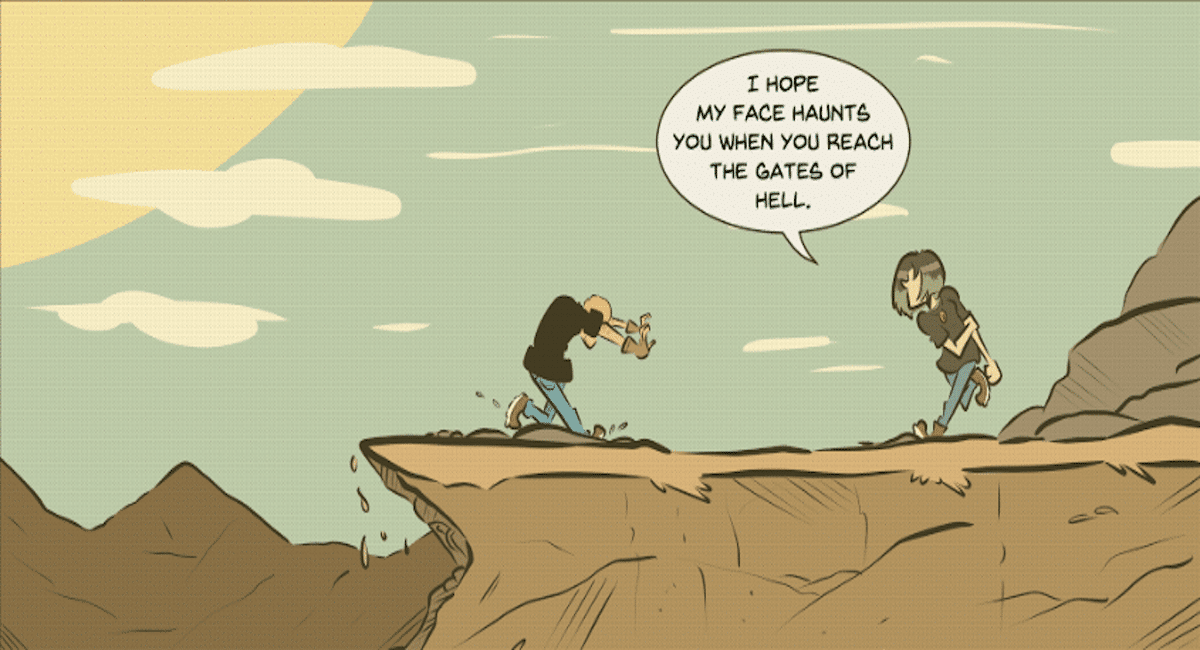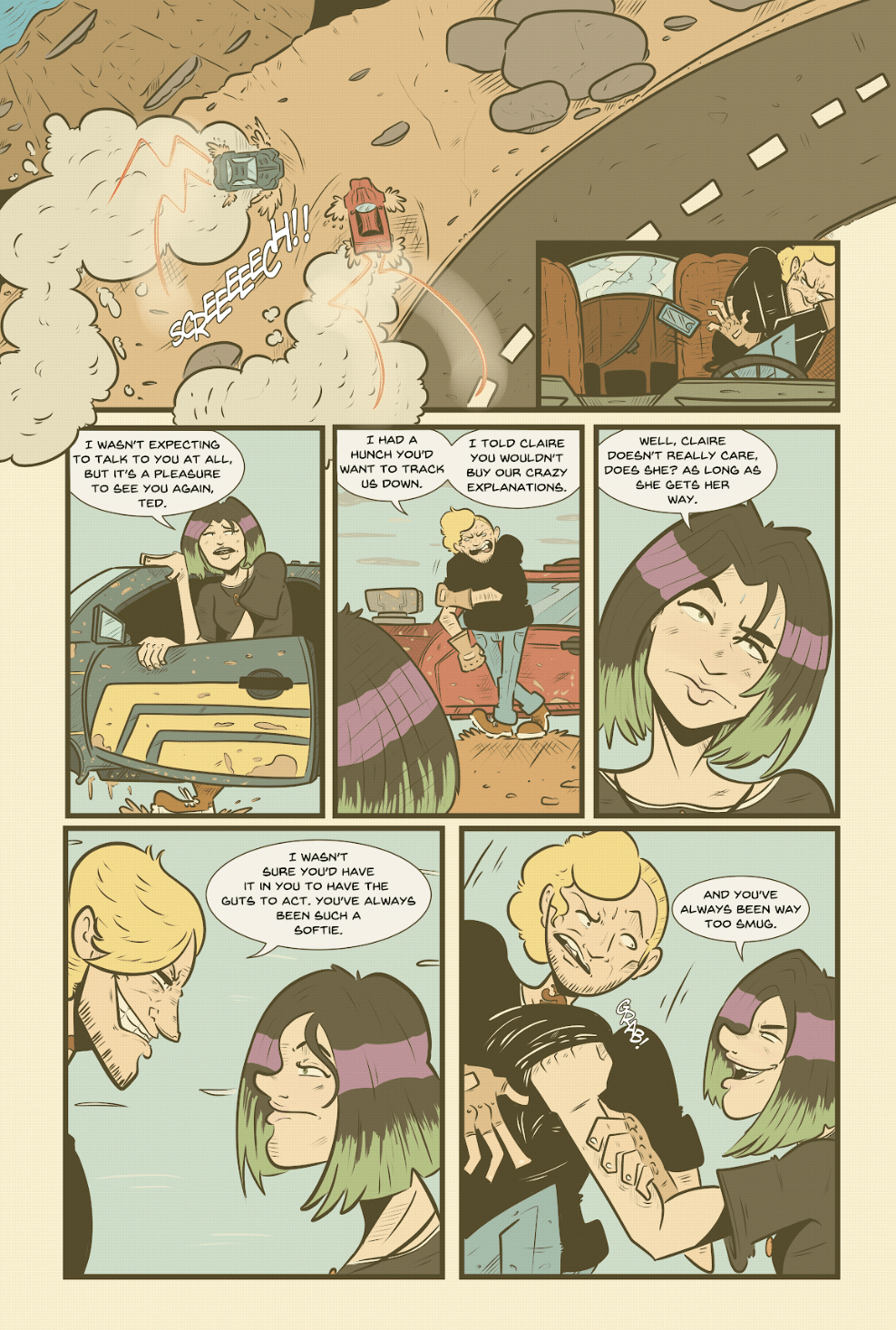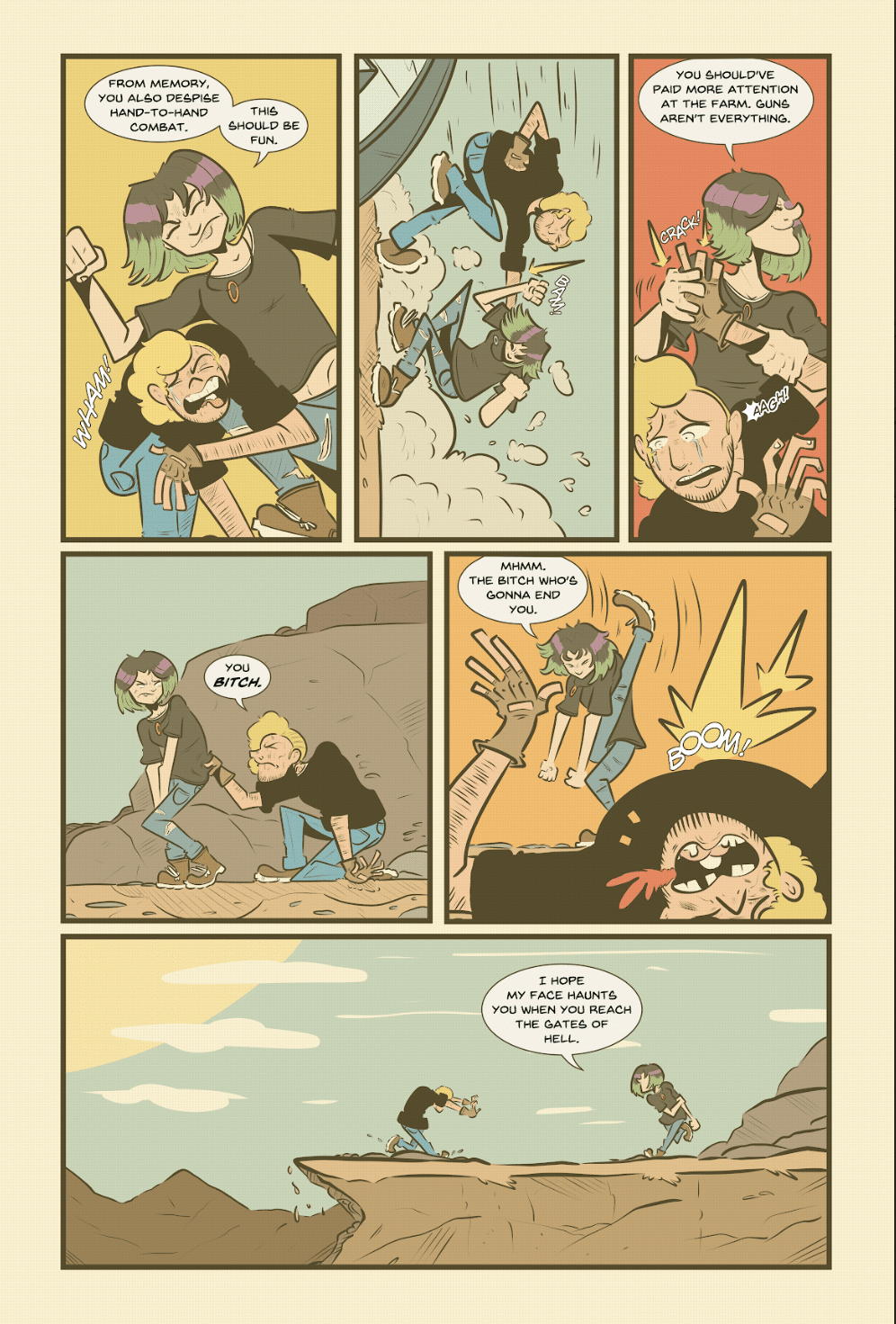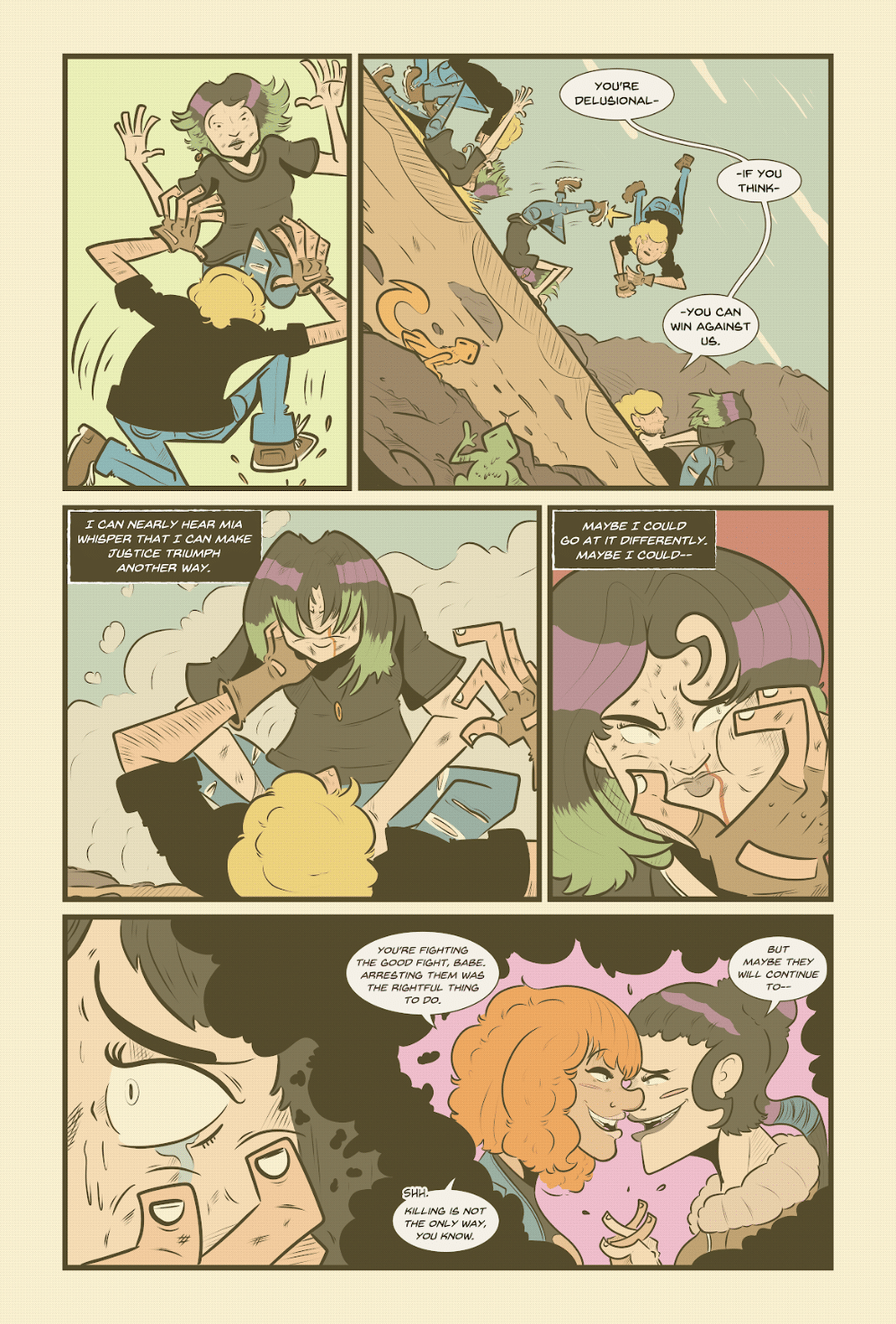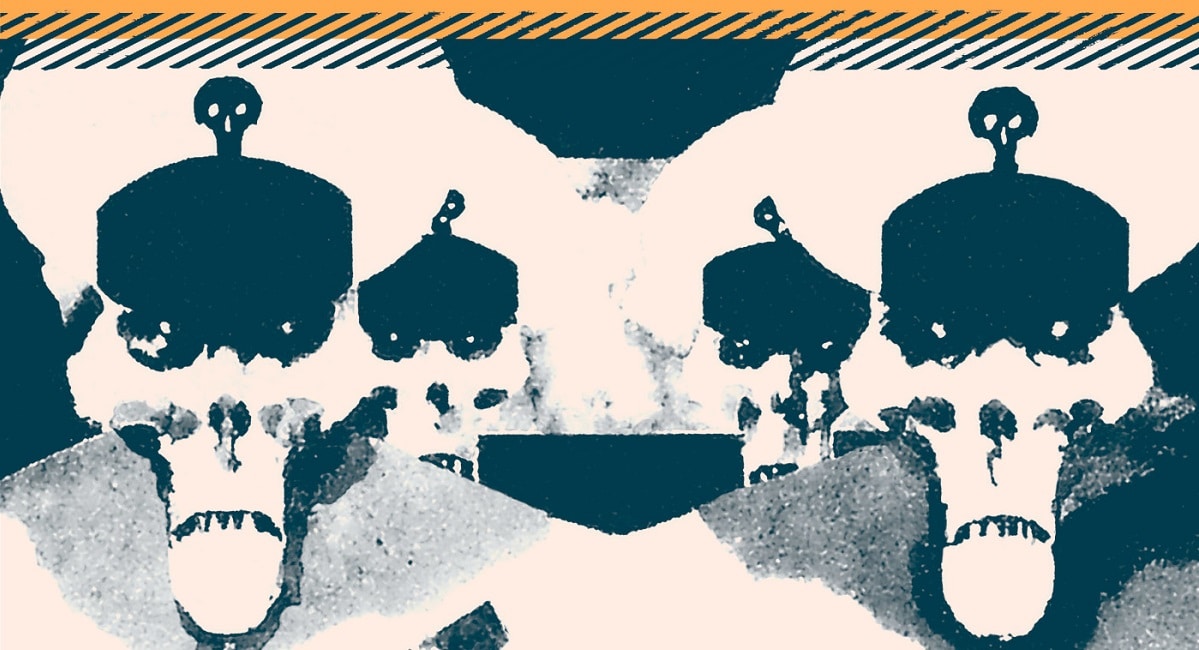M.H. Cali (Entropy, Black Ops series of books) has gathered a team of diverse creators to work on their newest project The Fury, The Maelstrom, and The Kiwi.
The comic centers around the concept of different artists working on different chapters of a story, providing a unique and beautiful interpretation as a whole in a single volume. We checked in with Cali via e-mail to get details about the new crowdfunded release and what makes it special.
Diego Higuera: What inspired the story behind The Fury, The Maelstrom, and The Kiwi — and its unique title?
M.H. Cali: The story itself spawned from a desire to explore love and loss in somewhat extreme conditions. About how we construct our lives around things and people who are important to us, but what happens when we are stripped from essential elements of what was making us whole? Can we become evil under the “right” circumstances? Akemi is an ex-spy who was as loyal as can be. She was willing to give everything she had and all she was to her organization. An organization that sadly wasn’t on the same wavelength as her as she will soon find out. She also gave her whole heart to Mia, her wife, who was the one person who was able to bring her an equilibrium in life that she desperately seeked. Losing her wife definitely sent her on an introspection — and some kind of bender — that will define who she decides to be moving forward. As for the title, it came to me in a dream. No, I’m kidding. I’m a big movie buff, so I thought the nod to something as iconic as The Good, The Bad, and The Ugly was a fun word play. It’s also because it encapsulates the three pillars of this story very well. The “Kiwi” part is a fun reference, as well as a thread within the story, and you’ll have to read to find out why it made it into the title!
Higuera: What motivated you to assemble such a diverse team of creators for this graphic novel project?
Cali: I am proud beyond measure of the team we have. Collaborating with them has been nothing but a joy and an honor. When I wrote this script, I knew different styles would serve the story well and make it unique. Turns out that I also think that there’s sadly an underrepresentation of women, as well as queer and nonbinary creators, in the industry at various levels — and I firmly believe that representation matters. It honestly happened organically that this team got assembled as it is. I am also very lucky to have one of my besties be part of the comics community, as well as call some of those creators friends. Knowing their art, their artistic vision, their unique styles, and their love and dedication to their craft, it was a no brainer for me to ask them if they wanted to be part of this project. I felt very privileged that they all jumped on board.
Higuera: How do you believe the various artistic interpretations from different creators enhance the storytelling experience in The Fury, The Maelstrom, and The Kiwi?
Cali: Every issue, plus the epilogue, has its own vibe, and I think bringing a different artist for each makes it pop even more. There’s beauty in seeing a story through different artistic lenses, and since each style is so different as well as each artist bringing their own vision, sensitivities, and personalities to the script is all making for an immersive experience. It’s also all in the marvelous work of our letterer Mitzi Krasnoff who chose to adapt the lettering to each of those art styles to create an even more distinctive feel.
Higuera: The synopsis suggests a dark and intense narrative centered around revenge. What themes or messages do you hope readers will take away from the story?
Cali: That there is never only one way of doing things. Even if Akemi chooses a certain path, she struggles at each step, doubts, second-guesses, and openly battles all the layers of her personality to ultimately slip into one in particular. I’m not saying the choice she makes is the right one. It’s one motivated by her spy background and how she has been conditioned to see the world. But at its core, the story is one about the complexities of the human psyche and how when put in extreme conditions that hit too close to home we are capable of the best but also the worst. No matter what, there is always an option and a choice to be made. Good or bad, Akemi knew that, made a very informed one, and even at the very end of the story, there’s signs that her internal war is not fully over…but you’ll have to read it to know what I’m talking about!
Higuera: Can you elaborate on the influences of films like Kill Bill and Atomic Blonde on this project? How do they manifest within the narrative or visual style?
Cali: They definitely manifest in both. The story itself is divided much like in Kill Bill with snippets of the past life of the protagonist, Akemi, and a list of names that have to be taken care of. Each of them bring in a distinct atmosphere, another concept quite reminiscent of The Bride targets in the movie. That obviously translates to the visuals who shift from one issue to the other to tune in to those vibes. Atomic Blonde is more in the undertones. Again with the list but also with the insights into Akemi’s mind and how she puts forward a persona when she is in “work-mode.” A persona that is needed to carry on her plan, but that is not all that she is. It’s easier to be all pragmatic and tactical rather than emotional, but Akemi has layers to her personality, and they battle with each other in the story. It’s a constant internal struggle. Let’s see if one side takes over the other.
Higuera: In what ways does The Fury, The Maelstrom, and The Kiwi distinguish itself from other works in the romance, suspense, and thriller genres?
Cali: I think in more ways than one it’s a love letter to all of the above, but I always try to put my spin on things. Here it means that the elements of romance are woven in to tap into the more emotional and personal sides of Akemi, clashing with the intensity of her inner self-destruction and clear suspense vibe as she pursues her chosen mission. Nothing in life comes alone, and I hope this story shows that softness and rage can indeed coexist, even if imperfectly, and even in the most raw situations.
Higuera: Could you discuss the significance of the graphic novel format for conveying this particular story? How does it differ from traditional prose storytelling?
Cali: I love sequential storytelling. To me, putting visuals at the service of a story brings it to a superior level. Another thing I firmly believe in is that sequential storytelling should always be an as flawless blend as possible between the visuals and the storytelling. It’s the only medium where we can truly build a conversation between the art and the words, and we can do it at every page. The art can make the world we’re building that much more rich and bold, carry so much meaning, and show essential information at a glance while the words that actually make it to the page have to be poignant, essential, and at the service of the art to bring another dimension to the tale we’re conveying. For The Fury, The Maelstrom, and The Kiwi, having descriptions with no visuals to show for it and not being able to carry people from one panel to the other up until we reach a point where the narrative explodes in a DPS or a key moment that jumps out the page under the pens of those tremendously talented creators I’m collaborating with, would’ve been a disservice to both the story and the readers. This story was built from the get-go to ally art and words to make for the most complete experience. We hope it shows through the pages.
Higuera: How important do you believe representation and diversity are within the comic book industry, both in terms of creators and characters?
Cali: I hinted at it before, but I think it is essential. It happens quite a lot that some of my readers reach out to tell me that it was great to see that my FMC was bisexual, that a couple in my story was queer or that my MMC was of another religious background and ethnicity. What I learned is to never underestimate the power of actually seeing or reading about characters that are relatable and that show this diversity. Characters in stories are a great portal for people to witness and embrace that diversity that exists already in the world, but that is sometimes frowned upon for no valid reason. Creators behind the stories being from diverse backgrounds, sexual orientations, and beliefs add to that incredible richness of voices. We are all in this together, better make the best out of it and make the world a better place by uplifting one another. To me, there’s true beauty in diversity and each voice deserves to be heard in all its unicity and genuineness.
Higuera: With the release on Zoop, what advantages do you see for creators and readers compared to more traditional publishing routes?
Cali: The big advantage of crowdfunding for indie voices to me is to be able to put forward the exact product we thought about while creating it and interact on a larger scale directly with people interested in our work. It can be a platform to showcase up and coming talents and outside the box takes that publishers wouldn’t always necessarily embrace. There’s also a lot more possibilities of customizing the products we are offering, and in our case it shows in an exclusive T-shirt designed by Liana Kangas with a drawing by Elsa Charretier and a quote from the story that we are proud to offer exclusively as part of the campaign. It’s only one example, but overall I think creative freedom and flexibility on our terms are the biggest takeaways.
To find out more about The Fury, The Maelstrom, and The Kiwi check out the project here.


